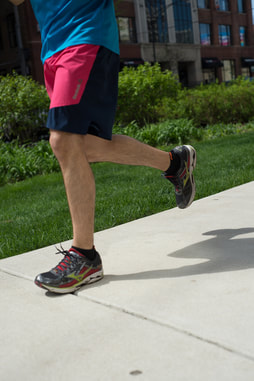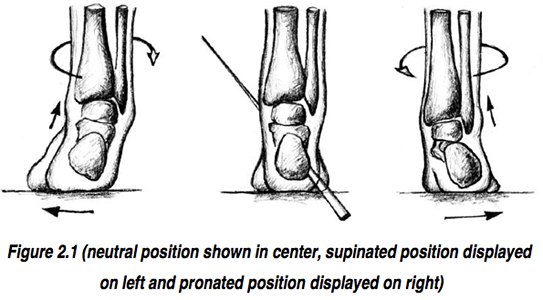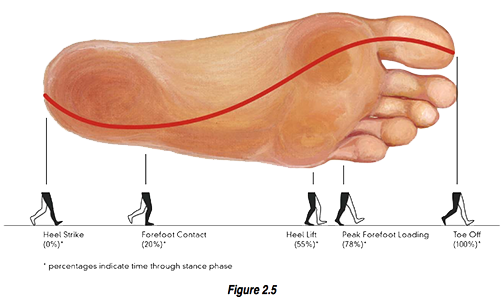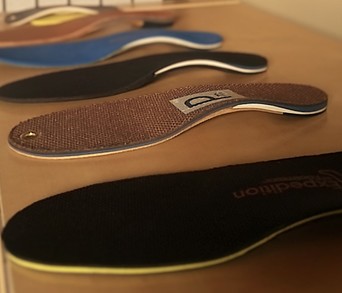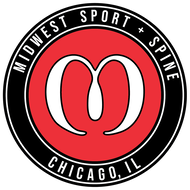Running Orthotics Chicago, IL
Your sprain to the outside ankle is a common injury. It can happen during a rigorous sporting event or when walking on uneven terrain. The injury can be very painful and activity be limited for a couple of weeks; however, if a sprain does not fully recover, it could lead to recurrent injuries well after the first incident.
Without proper rehabilitation, the ankle will remain unstable. The ankle is more susceptible to injury because the ligaments did not fully recover and cannot support normal balance and mobility.
Recurring injuries or sprains can easily occur if the ankle is over-exerted without proper recovery and support. This may prolong recovery time and increase the potential for further injury.
Without proper rehabilitation, the ankle will remain unstable. The ankle is more susceptible to injury because the ligaments did not fully recover and cannot support normal balance and mobility.
Recurring injuries or sprains can easily occur if the ankle is over-exerted without proper recovery and support. This may prolong recovery time and increase the potential for further injury.
When lateral ankle inversion occurs, ligaments can stretch or tear as the bottom of the foot moves inward. These ligaments that provide mobility and support to the ankle become weakened and lack proper functionality. To reduce pain and swelling for a sprain, the typical treatment consists of ice, rest, and NSAIDs (Non-steroidal anti-inflammatory drugs); although this will lessen swelling and discoloration, ligaments in the foot will still be damaged.
Basic functions:
Biomechanics is the study of the body in motion. Foot biomechanics studies the relationship of the foot to the lower leg. During walking and running the musculoskeletal system generates forces to propel the body forward. The foot serves two main functions. It acts as a mobile adaptor to adjust to varying terrain, and as a rigid lever for forward propulsion in locomotion.
The two functions are: 1)time specific in that when the foot spends too much time being a mobile adaptor it is not spending enough time being a rigid lever and 2) vice versa. Biomechanics of the foot analyzes how the various structures of the foot, work together to perform specific functions (timing being of utmost importance) excessive or prolonged motion or lack of motion will cause various deformities and pathologies. Proper biomechanics allow human beings to walk, run, jump, and move freely without pain or dysfunction.
The two functions are: 1)time specific in that when the foot spends too much time being a mobile adaptor it is not spending enough time being a rigid lever and 2) vice versa. Biomechanics of the foot analyzes how the various structures of the foot, work together to perform specific functions (timing being of utmost importance) excessive or prolonged motion or lack of motion will cause various deformities and pathologies. Proper biomechanics allow human beings to walk, run, jump, and move freely without pain or dysfunction.
Biomechanics of the foot:
- Gait Cycle - a complete gait cycle when the foot is in contact with the ground (weight bearing)
- Stance Phase - A portion of the gait cycle when the foot is in contact with the ground (weight bearing)
- Swing phase- the portion of the gait cycle when the foot is in the air (non-weight bearing)
- Subtalar joint- neutral position- the position of the subtalar joint in which the foot is neither pronated nor supinated. When the hindfoot is neutral, the bisector of the calcaneus is the 90 to the supporting surface
- Subtalar joint pronation- is a coordinated tri-plane motion of the foot which involves three planes of motion: abduction, dorsiflexion and eversion
6. Subtalar joint supination- a coordinated tri-plane motion of the foot which involves three planes of motion: adduction, plantarflexion and inversion
7. Pronated and supinated- adjectives which describe the position of the foot (they do not describe the action of pronation or supination). Thus a “pronated foot” is one which is in a pronated position as compared to a neutral position
8. Degrees of pronation and/or supination- this is measured by the degrees of inversion (in the case of supination) or eversion (in the case of pronation) away from the neutral position
9. Normal centre of pressure line (gait line)- is the average vector of all forces that act on the bottom of the normal foot as it goes through the stance phase of gait.
7. Pronated and supinated- adjectives which describe the position of the foot (they do not describe the action of pronation or supination). Thus a “pronated foot” is one which is in a pronated position as compared to a neutral position
8. Degrees of pronation and/or supination- this is measured by the degrees of inversion (in the case of supination) or eversion (in the case of pronation) away from the neutral position
9. Normal centre of pressure line (gait line)- is the average vector of all forces that act on the bottom of the normal foot as it goes through the stance phase of gait.
